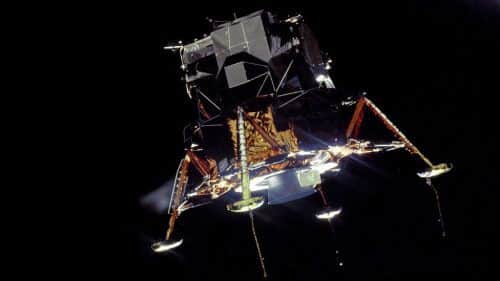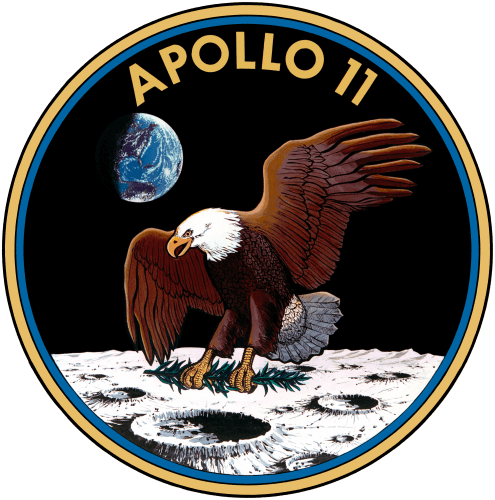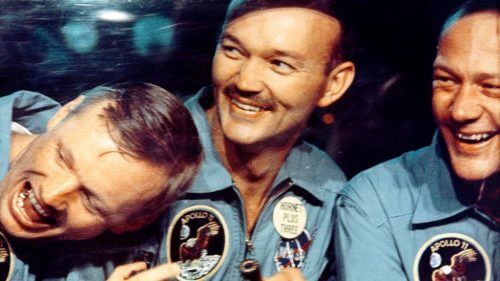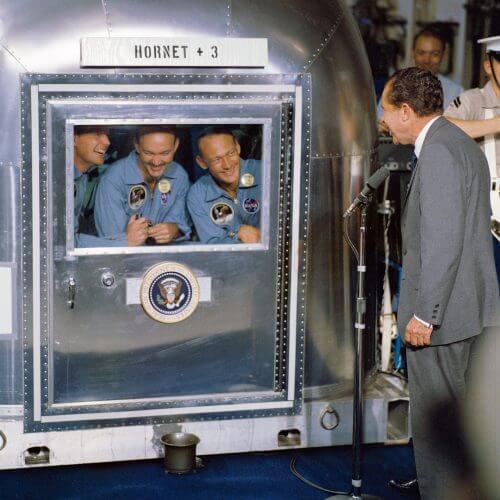This month it will be 50 years since the Apollo 11 spacecraft landed on the moon and with it the first man to walk on it, Neil Armstrong. What really happened there, at the moment when Armstrong walked on the moon, how was the plan cooked and what happened at NASA in the period leading up to the historic landing?

From: The Space Agency of the Ministry of Science
20.7.1969. Neil Armstrong, commander of the Apollo 11 mission left the landing compartment and took the first step, unimaginable at the time, on the moon. The United States flag was planted on the lunar soil and NASA breathed a sigh of relief, along with millions of viewers around the world who witnessed this wonder.
Three team members participated in the mission:
- The commander of the mission, Neil Armstrong, a pilot in the US Navy, graduated in aeronautical engineering and qualified in aerospace engineering.
- Lunar pilot Buzz (Edwin) Aldrin, PhD in Astronautics, served as a pilot in the Korean War.
- The cockpit pilot, Michael Collins, is a science graduate from the West Point Military Academy and a test pilot in the Air Force.
Apollo 11 was launched on a Saturn 5 rocket. The spacecraft went into orbit around the Earth, circled it one and a half times, and then turned on the engines once more towards the Moon. She arrived there three days after being launched from Earth. On July 19, the spacecraft entered orbit around the moon, and after twenty-four hours in orbit, as it circled the moon, the command and service compartment detached from the lunar lander, the "Eagle", with Neil Armstrong and Buzz Aldrin inside.
At this point the guidance computer almost collapsed from overload. Just before the decision to abandon the mission and order the astronauts to reconnect to the command booth, an engineer, Steven Bales, came up with the idea of transmitting the computer data only to Earth, while the contact person would report it to the lander, thus reducing the load on the computer. The attempt was successful and a short time later, with enough fuel for only twenty additional seconds of flight, a suitable place to land was found and the report "The eagle has landed" was heard.
Not only a flag was planted on the lunar soil. After Buzz Aldrin joined Neil Armstrong on the lunar surface, the two placed a plaque with the inscription: "Here for the first time people from Earth set foot on the moon. July 1969 AD. We came for peace on behalf of the entire human race."
Armstrong and Aldrin left the moon the next day, and after the successful takeoff from the moon, they reconnected to the command cabin, "Columbia", where Michael Collins was waiting for them. After the two moved to the command cabin, the Columbia's engines were started and the crew entered the path back to Earth. The landing was carried out using parachutes in the Pacific Ocean, southwest of Hawaii.

What is wrong with the Apollo mission symbol?
The mission symbol was designed by the team members themselves. Due to the historical importance of the task, the three were careful about every single detail in the symbol, which did not prevent them from making a basic scientific error: in the symbol, the moon and the earth are visible when they are illuminated from above by the sun, instead of the earth being illuminated from above, as is actually the case.
Also in the symbol is a white-headed eagle, the national bird of the USA (the spacecraft is also named after him), an olive branch next to it and the words "Apollo 11", with the use of Arabic numerals instead of English words or Roman numerals - so that the whole world will understand their meaning.
Prepare for the worst

One of the scenarios that kept many at NASA awake was what would happen if Armstrong and Aldrin just got stuck on the moon.
Although NASA prepared for every malfunction and problem, the landing on the moon - and the launch back from the moon to the Columbia command cabin - were never actually attempted. In the event of a malfunction in the "Eagle", the amount of oxygen used by Neil Armstrong and Buzz Aldrin would have been enough for them for only forty hours. And even if there was enough oxygen, the landers were built so that they could only accommodate two people, so a rescue spacecraft that was sent could save only one person, in addition to the pilot. NASA's decision in the case of such a bad scenario was unequivocal: Michael Collins returns to Earth, while Armstrong and Aldrin die, slowly and agonizingly, on the moon.
In fact, this scenario resonated so much in everyone's mind that even the White House prepared a speech for the then president, Richard Nixon, to deliver in the worst case scenario. The speech included words of praise and praise for the heroism of the two, their heroic act of sacrifice, in the name of science and humanity, and their courage. Fortunately, this speech was never used.
How much did the astronauts who flew to the moon earn?
The popular opinion is that in the world of employment, the more dangerous the job a person performs, the more his salary will increase according to the degree of danger in his job. There is no doubt that flying to the moon is considered a job with multiple dangers, some of which are even unknown in advance. So how much would an astronaut earn for a flight to the moon?
Surprisingly, not very much. Apollo 11 crew members were civil servants for all intents and purposes, with their salary determined according to their professional seniority, education and military rank. Their salary ranges, depending on their role in the delegation, between $17,147 a year and $27,401. Even more interesting is the fact that for the task they performed, they did not even receive a risk supplement... What they did receive was a daily salary supplement, similar to the ISL that an employee who travels abroad as part of their work receives, about eight dollars per day, offsetting hotel stay expenses, since they are sleeping in a spaceship.
The not very high salary that the astronauts received stands in complete contrast to the amount that the United States invested in the project - close to 24 billion dollars.
With such a modest salary, it was difficult for the team to think of life insurance for him, which is required in view of the risk, but with astronomical costs from the insurance companies. The creative solution, which Neil Armstrong came up with, was to prepare hundreds of celebratory mailing envelopes that the three crew members would sign before they left for the moon. The envelopes were entrusted to a friend, who made sure that the envelopes were also postmarked. The idea was simple: in the event of a disaster, these envelopes would be sold for a lot of money, which would be given to their families. The idea was so successful that the next members of the Apollo team, 12 to 16, also prepared sealed mail envelopes, which would serve as a kind of life insurance in case of need. These envelopes have a great monetary value, even today, fifty years later, despite the fact that the team members returned home safely.
Upon their return to Earth, it was made clear to the whole world that bureaucracy cannot be escaped even if you flew to the moon. The three were required to fill out a routine customs form used by anyone leaving the US borders. and includes a section in which the passengers must declare the agency in their possession. In this section, the three listed the cargo they brought with them: stones and moon dust.

Celebrating the 50th anniversary of the moon landing
As part of the jubilee events forApollo 11 landing on the moon, the Israel Space Agency will mark the event in a variety of events across the country. Whether you choose to observe the moon from the port of Tel Aviv, from Jerusalem, or from Mashhad, or you come to watch a lecture and a planetarium show in Netanya - a variety of events for the whole family await you all over the country. For information on all the events, visit the Israel Space Agency website.
More of the topic in Hayadan:
- Neil Armstrong: Those who do not take risks do not progress
- Apollo 11 - Man on the Moon: Flight Summary
- Apollo 11: the routine of the astronauts on the moon
- Apollo 11: The tension that preceded the landing
- A special project on the knowledge site: 50 years since the landing on the moon
